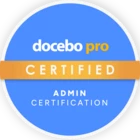Good Monday morning, Hivemind …
I have a group that wants to offer training to an external organization “with thousands” of potential users. This tenant in our extended enterprise uses SSO for its learners, and the thought of managing this many users is daunting for them (understandably). They don’t need to track any of the participation or course completion information.
- I know that I can create a limited number of accounts and provide the username/passwords to the organization.
- I understand that the course shell shows the “resume” or “start again” buttons, as does the SCORM file.
- I understand that Docebo doesn’t really have the concept of a “multiple users” account.
Does anyone know how to stop SCORM from doing any tracking? I’d love to present the course again and again as if it had never been viewed.
Thanks for any ideas …
KM







